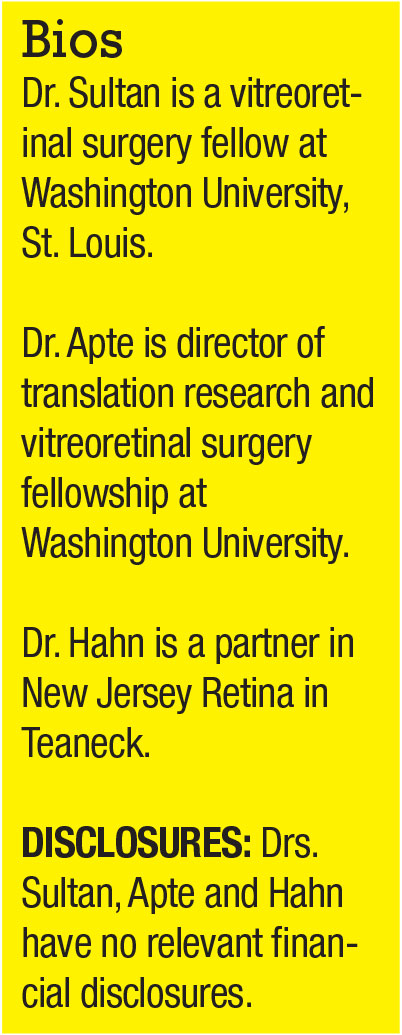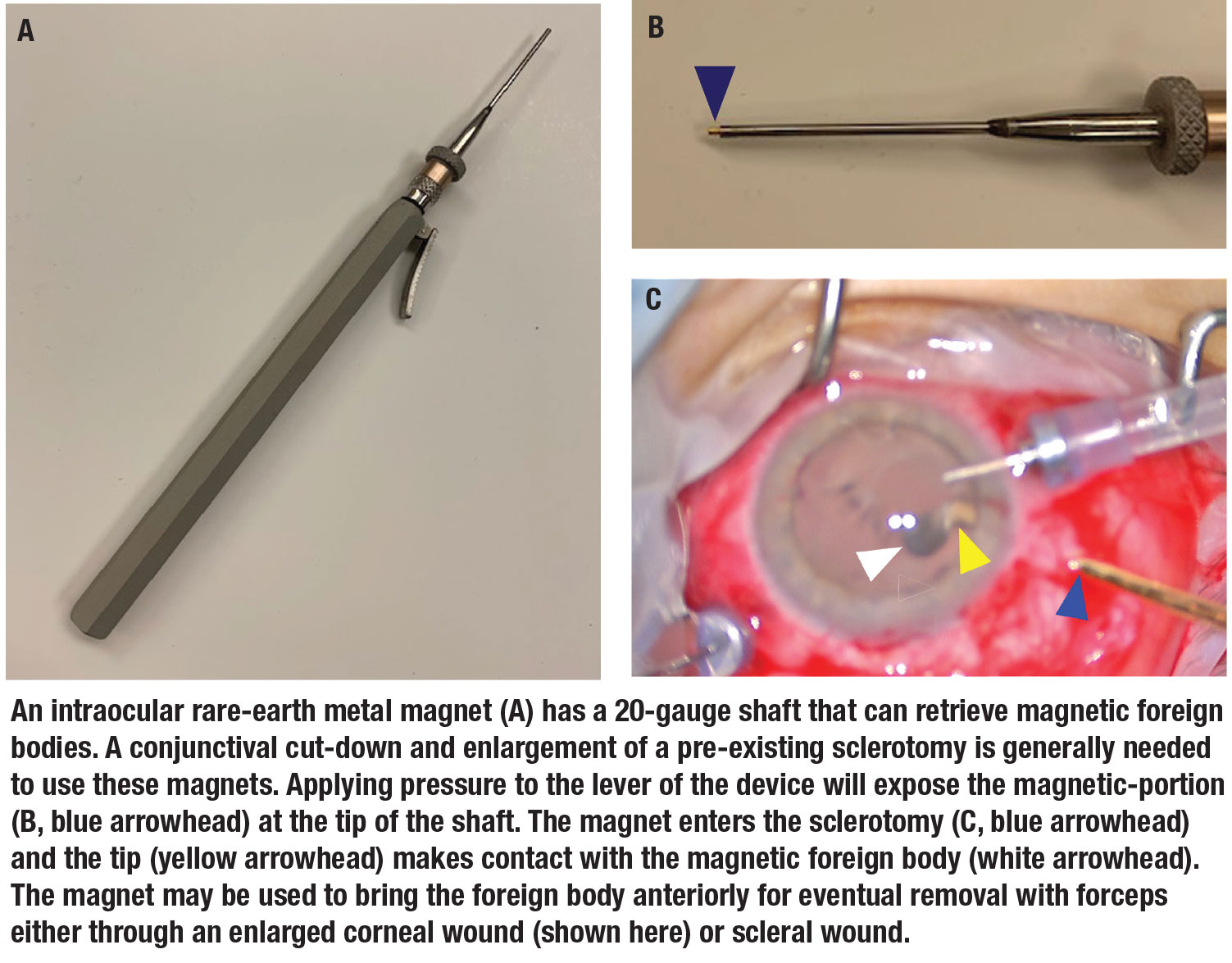 |
 |
Intraocular foreign bodies can result in potential complications of endophthalmitis, retinal detachment, vitreous hemorrhage and other metal-based toxicities such as siderosis (due to the presence of iron) or chalcosis (due to the presence of copper).
Moreover, surgical removal of foreign bodies can often be challenging because the foreign bodies themselves can be difficult to grasp and extract. Here, we describe a few pearls in the removal of a magnetic intraocular foreign body.
Hemostasis at the time of foreign body removal
An intraocular foreign body may be found at various levels in the posterior segment ranging from intravitreal to trans-scleral. If it involves the choroid, the foreign body may be providing a vascular tamponade, keeping the choroidal vasculature from bleeding.
The removal of a trans-choroidal foreign body can result in significant intraoperative hemorrhage. Increasing the infusion pressure to 80 mmHg at the time of foreign body removal may help reduce choroidal hemorrhage.
Additionally, we apply laser and/or diathermy around the insertion of the IOFB to help coagulate surrounding retinal vessels. Sometimes, blunt tamponade with intraocular instruments—for example, a light pipe or the tip of the vitreous cutter—can be helpful if bleeding
persists.
Use of magnets
Both internal and external magnets can be helpful in extracting magnetic foreign bodies. An internal magnet is a rare-earth magnet that attracts ferro-magnetic objects towards its typically 20-gauge shaft. To introduce the internal magnet, perform a conjunctival cut-down and use a 20-gauge micro-vitreoretinal blade to create or enlarge a sclerotomy.
An internal magnet is helpful when other tissues, including retina, choroid and vitreous, encapsulate the foreign body. The magnet provides a controlled amount of force for dissecting the foreign body from surrounding tissues. The internal magnet can then extract the foreign body in a controlled fashion, often requiring the assistance of external forceps to extract the foreign body.
Although less commonly available, an external magnet may be helpful to draw unencapsulated foreign bodies to an extraction site. Place the external magnet at the site of the enlarged sclerotomy and activate it once it’s properly positioned.
If the foreign body is lodged under the retina, choroid or extensive vitreous, the powerful external magnet may pull it through these tissues and result in complications such as retinal detachment and hemorrhage, so use it judiciously.
 |
Bottom line
Removal of intraocular foreign bodies can sometimes be challenging. In these cases, internal or external magnets may be a helpful part of a vitreoretinal surgeon’s armamentarium. RS




